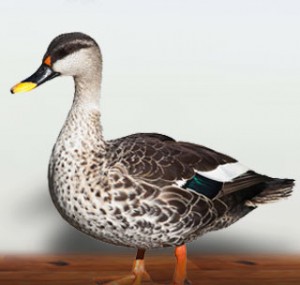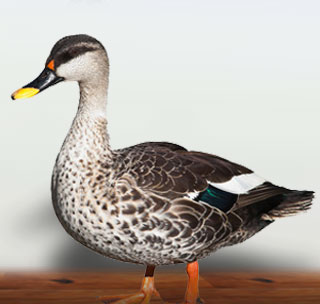Duck and goose hunters are frequently devotees of waterfowl taxidermy, and it’s no mystery why. In the hands of a skilled taxidermist, waterfowl make for beautiful, realistic subjects, and modern mannequins allow even novice hobbyists to pose their specimens in a lifelike fashion.
Waterfowl, like all birds are unique from mammals in that they have feathers. While this seems like a painfully obvious thing to point out, it’s very important to keep in mind that a bird’s skin is almost nothing like a deer or coyote’s. Bird skin tends to be thinner, and very greasy, so most taxidermists end up having to clean it with special degreasing solutions, or even dishwashing liquid. Care also has to be taken when removing skin from legs and wings. These areas are complex and delicate, and it’s easy to damage the skin if extreme caution isn’t exercised.
 After the skin is removed, cleaned, degreased, and preserved, waterfowl taxidermy requires another step that mammalian taxidermy doesn’t- grooming the feathers. Without following this seemingly-minor step, the end result of the mounted waterfowl will look sloppy and unrealistic. In life, birds groom themselves fastidiously, and the direction of the feathers is controlled by muscles under the skin, allowing the birds to puff up to keep warm or look more threatening. After death, and once all of these muscles have been removed after skinning and cleaning, the feathers will end up sticking up in all sorts of directions. Leaving them be without attempting to groom them back to how they would lie on a live bird can completely ruin the look of an otherwise well-executed mounted bird. Care also has to be taken not to break the larger primary wing or tail feathers while the skin is being prepared, though any broken feathers can be fixed with a tiny bit of fast-drying glue at the end of the process.
After the skin is removed, cleaned, degreased, and preserved, waterfowl taxidermy requires another step that mammalian taxidermy doesn’t- grooming the feathers. Without following this seemingly-minor step, the end result of the mounted waterfowl will look sloppy and unrealistic. In life, birds groom themselves fastidiously, and the direction of the feathers is controlled by muscles under the skin, allowing the birds to puff up to keep warm or look more threatening. After death, and once all of these muscles have been removed after skinning and cleaning, the feathers will end up sticking up in all sorts of directions. Leaving them be without attempting to groom them back to how they would lie on a live bird can completely ruin the look of an otherwise well-executed mounted bird. Care also has to be taken not to break the larger primary wing or tail feathers while the skin is being prepared, though any broken feathers can be fixed with a tiny bit of fast-drying glue at the end of the process.
After the bird’s skin is cleaned and properly preserved, it can be mounted on a pre-formed polyurethane foam mannequin. It can take up to two weeks for the skin to dry and the mount to “set up” thoroughly, so care should be taken not to disturb the waterfowl taxidermy before then, and to make sure that it‘s kept in an area with adequate airflow, to avoid mold setting in. After the whole process is complete, all the new mount should require is dusting to keep the feathers clean.
Though waterfowl taxidermy requires a few considerations that most other specimens don’t, the end product is always visually stunning, and a really great conversation piece. When all of the right steps are followed, even an absolutely beginner can create a beautiful, lifelike mounted waterfowl on their very first try.

